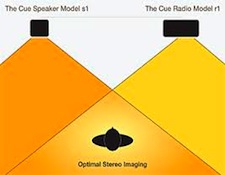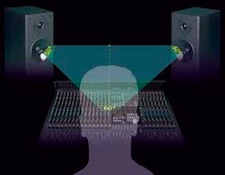It’s the time of year for saving money!
One of the allures of a high-performance audio system is its ability to create a three-dimensional image from stereo program material. In many ways this stereo “imaging” is a sonic parlor trick. With discrete left and right channels we create a phantom center as well as a “soundstage” from which all the sound emanates that spreads across the space between your right and left speakers, and sometimes, even beyond the physical boundaries of the speakers themselves.
 For some audiophiles a system’s ability to create a three dimensional image is the most exciting and involving aspect of reproduced sound. But compared to frequency response and dynamic range, imaging is a far more recent addition to the list of “must-have” sonic attributes.
For some audiophiles a system’s ability to create a three dimensional image is the most exciting and involving aspect of reproduced sound. But compared to frequency response and dynamic range, imaging is a far more recent addition to the list of “must-have” sonic attributes.
In the days of monophonic, single channel recordings, there was no such thing as “imaging.” The sound came from the speaker; end of story. But mono recordings do portray depth. On a good monophonic recording you can sense that some instruments are closer sounding than others, but they all come from the same spot in space.
With the advent of stereo the potential for imaging became a reality, but imaging, as we experience it on today’s modern gear, still was not available except on a very few speakers, such as the original Quad ESL 57 or the Rogers LS35A BBC monitor design. Most speakers that were around in the early days of stereo did not image very well due to problems with phase and group delay caused by cabinet and crossover design, the physical location of drivers in relation to each other, and enclosure design (i.e. – ports).
 As more serious listeners and speaker designers became aware that imaging was a desirable sonic characteristic, the factors that limited speakers’ imaging were reduced, and in some designs, almost eliminated. Phase-coherence, pioneered by Jim Thiel and refined by John Dunlavy as well as other more au-courant designers, has advanced speaker design to the point where few audiophiles would seriously consider a speaker that didn’t offer a fairly high degree of imaging specificity and finesse.
As more serious listeners and speaker designers became aware that imaging was a desirable sonic characteristic, the factors that limited speakers’ imaging were reduced, and in some designs, almost eliminated. Phase-coherence, pioneered by Jim Thiel and refined by John Dunlavy as well as other more au-courant designers, has advanced speaker design to the point where few audiophiles would seriously consider a speaker that didn’t offer a fairly high degree of imaging specificity and finesse.
Nowadays it’s actually rather easy for even a hobby speaker builder to assemble a speaker that images well, especially if it is a small two-way design. Single driver designs, such as the Audience Clair Audient “The One” speaker offer pinpoint imaging. But some one-driver speakers I’ve heard which lack a proprietary, customized driver to maximize their linearity can sound pretty mediocre except for their imaging prowess. I have a pair of $15 MSRP all-plastic, single driver Yamaha computer speakers that J. Gordon Holt and I used for years as our on-location monitor speakers because they imaged so precisely. But no one, even with substantial hearing disabilities, would ever confuse the Yamaha’s overall harmonic balance with what you hear from a full-range speaker. Sure, the Yamaha’s image quite well, especially in a hyper near-field set-up, but their lack of dynamic acuity and abundance of plastic colorations are far less than optimal, to say the least.
The main stumbling block to imaging nowadays isn’t so much the speaker as the way that the speakers are set up. For optimum imaging, regardless of the speakers used, the listener and the two speakers should form a triangle. For many systems an equilateral triangle is ideal, and is usually great starting point for a set-up. And if it’s impossible to set up your speakers so they do form two sides of a triangle, completed by your listening position as the third point, most likley the imaging will suffer as a result.
The fact that even inexpensive speakers can, if properly installed in a system capable of supplying a high-quality source, deliver a three-dimensional image is a good thing. And while imaging is only one aspect of proper sound reproduction, its nice to see (and hear) that for most contemporary sound reproduction systems, the potential for good imaging has pretty much become a given…





